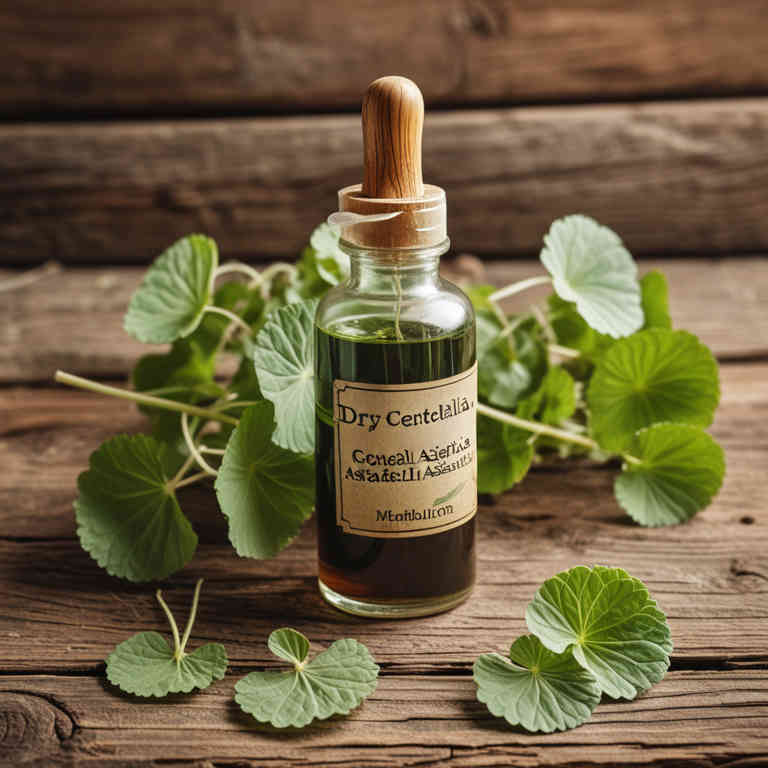Centella asiatica tincture for medicinal use

Centella asiatica tincture is a concentrated liquid extract made from the leaves of the Centella asiatica plant, commonly known as gotu kola.
It is traditionally used in herbalism to support cognitive function, reduce stress, and promote skin health. The tincture is often taken orally to enhance mental clarity and alleviate symptoms of anxiety or depression. It is also applied topically to aid in wound healing and reduce the appearance of scars.
This preparation is valued for its adaptogenic properties and is used in both traditional and modern holistic medicine.
Uses
Centella asiatica tincture has been used to promote wound healing, enhance cognitive function, and support skin health for centuries.
Historically, it has been a key component in traditional Ayurvedic and Chinese medicine, where it was valued for its ability to strengthen the body's connective tissues and improve mental clarity. In modern times, it is widely used as a natural remedy for conditions such as eczema, varicose veins, and anxiety due to its rich content of active compounds like asiatic acid and madecassic acid. Scientific studies have also shown its potential in improving circulation and reducing inflammation.
Today, it remains a popular herbal preparation in both traditional and complementary medicine practices worldwide.
Benefits
Centella asiatica tincture has health benefits such as promoting skin healing, enhancing cognitive function, and reducing stress.
It is traditionally used to support wound healing due to its ability to stimulate collagen production. The tincture may also help improve circulation and reduce inflammation in the body. It is often used in herbal medicine to support mental clarity and reduce symptoms of anxiety.
Additionally, it has been studied for its potential role in managing conditions like diabetes and high cholesterol.
Constituents
Centella asiatica tincture active constituents include asiatic acid, madecassic acid, brahminic acid, and triterpene saponins.
These compounds are known for their ability to stimulate collagen production and enhance skin repair. They also exhibit anti-inflammatory and antioxidant properties that support wound healing and skin health. Additionally, these constituents may improve circulation and cognitive function.
This tincture is commonly used in traditional medicine for its beneficial effects on skin, nerves, and overall well-being.
Preparation
To make Centella asiatica tincture, first gather fresh or dried Centella asiatica leaves and ensure they are clean and free from pesticides.
Next, place the leaves in a glass jar and cover them completely with high-proof alcohol, such as vodka or grain alcohol. Seal the jar and let it sit in a dark, cool place for 4 to 6 weeks, shaking it occasionally to ensure even extraction. After the steeping period, strain the liquid through a fine mesh strainer or cheesecloth to remove the plant material.
Finally, transfer the tincture to a dark glass bottle and store it in a cool, dry place, away from direct sunlight.
Side Effects
Centella asiatica tincture may lead to gastrointestinal discomfort, including nausea, vomiting, and diarrhea, especially when taken in high doses.
It can also cause allergic reactions in individuals sensitive to the plant, manifesting as skin rashes or itching. Prolonged use might result in liver toxicity, particularly in people with pre-existing liver conditions. There is also a risk of interaction with certain medications, such as diuretics or blood pressure drugs.
As with any herbal preparation, it is important to consult a healthcare professional before use to ensure safety and appropriateness for individual health conditions.